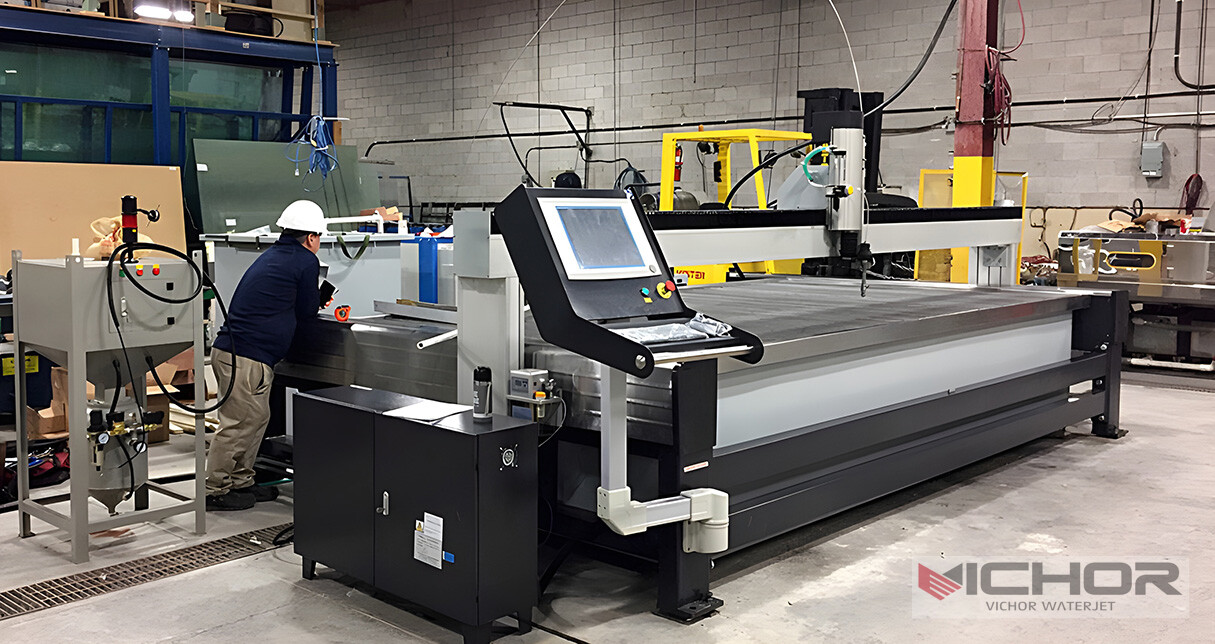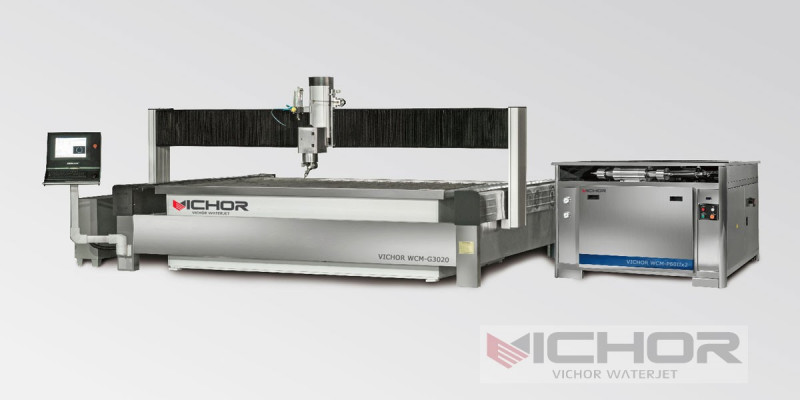
7 Incredible Advantages of Table Top Water Jet Cutters You Need to Know
The world of precision cutting has witnessed a remarkable democratization with the advent of table top water jet cutters. No longer confined to massive industrial floors requiring hefty investments and dedicated facilities, the power of abrasive waterjet technology is now accessible on a benchtop scale. These compact powerhouses are revolutionizing prototyping, small-batch production, and educational environments. Let’s dive deep into the seven key advantages that make table top water jet cutters an indispensable tool for modern makers and manufacturers.
1. Unparalleled Precision and Intricate Cutting Capabilities
At the heart of any table top water jet cutter lies its exceptional ability to achieve incredibly precise cuts with intricate detail. Unlike thermal cutting processes (laser, plasma), waterjet cutting is a cold process. This means there is no Heat Affected Zone (HAZ). The material being cut isn’t melted, burned, or thermally stressed.
Tight Tolerances: These machines consistently hold tight tolerances, often within +/- 0.005 inches (0.127 mm) or better, depending on the machine’s calibration and material thickness. This level of precision is crucial for parts requiring exact fits or complex geometries.
Kerf Control: The cutting stream (kerf) of a table top water jet cutter is remarkably narrow, typically ranging from 0.020″ to 0.050″ (0.5mm to 1.27mm) when using abrasive. This minimizes material waste and allows for cutting very fine features and sharp internal corners that would be impossible or extremely difficult with other methods.
No Material Warping: The absence of heat ensures that even thin, heat-sensitive materials retain their original metallurgical properties and flatness, eliminating warping or distortion common in laser or plasma cutting.
Edge Quality: While cut speed and material type influence the finish, waterjet cutting typically produces a smooth, sandblasted edge finish. Higher-quality cuts or specialized techniques can achieve near-machined finishes.
2. Remarkable Material Versatility: Cut (Almost) Anything
Perhaps the most compelling feature of a table top water jet cutter is its extraordinary material versatility. It is truly an “omni-material” cutting solution.
Metals: Effortlessly cuts through hardened tool steel, stainless steel, aluminum, titanium, brass, copper, and exotic alloys – materials that are often challenging or impossible for desktop lasers. Thickness capacity on benchtop models typically ranges from thin foils up to several inches (often 1-3 inches for harder metals, more for softer materials), depending on the machine’s pump pressure.
Composites: Ideal for carbon fiber, fiberglass, Kevlar, and other laminates without causing delamination, fraying, or the toxic fumes associated with laser cutting composites.
Stone, Tile, and Glass: Perfect for intricate designs in marble, granite, ceramic tile, and glass – applications where traditional methods struggle with brittleness.
Plastics and Rubber: Cuts acrylics, polycarbonate, PVC, UHMW, rubber, and foam cleanly without melting or producing hazardous fumes. This makes the table top water jet cutter safer and cleaner than lasers for many plastics.
Exotics: Handles materials like circuit boards, gaskets, tooling board, and even food products (using pure water) with ease.
Laminates: Can cut through stacked or layered materials effectively.
3. Compact Footprint and Benchtop Convenience
The defining characteristic of a table top water jet cutter is its size. This compactness unlocks numerous benefits:
Space Efficiency: Designed to fit on a sturdy workbench or small stand, these machines require minimal floor space compared to their industrial counterparts. This makes them viable for small workshops, garages, university labs, R&D departments, and even some studio spaces.
Accessibility: The smaller size and lower cost barrier (though still a significant investment) bring waterjet technology within reach of small businesses, startups, educational institutions, and serious hobbyists who previously couldn’t justify a full-size system.
Ease of Integration: Their compact nature allows for easier integration into existing workflows alongside other benchtop tools like 3D printers or CNC routers.
Portability (Relative): While still heavy equipment, some table top water jet cutter models are designed to be more manageable to move and install than multi-ton industrial machines.
4. Enhanced Safety and Environmental Friendliness
Operating a table top water jet cutter offers significant safety and environmental advantages over many alternatives:
Cold Cutting Process: Eliminates risks associated with high heat, sparks, flames, and fumes generated by plasma, laser, or oxy-fuel cutting. This significantly reduces fire hazards and operator exposure to harmful emissions, especially when cutting plastics or composites.
Reduced Fumes and Dust: While cutting does generate some mist (requiring basic enclosure or ventilation), it produces vastly fewer hazardous fumes than laser cutting certain materials (like PVC) and less dust than heavy machining or routing. Pure water cutting (for soft materials) produces virtually no airborne contaminants.
Quieter Operation: While not silent, table top water jet cutter systems are generally quieter than large industrial waterjets or plasma cutters, especially when enclosed.
Non-Toxic Process: The primary cutting medium is water and garnet abrasive (an inert, natural sand). There are no toxic gases or radiation involved. Wastewater and spent abrasive sludge are the primary byproducts, which are non-hazardous and can often be recycled or disposed of responsibly.
5. Reduced Operating Costs and Material Savings
While the initial investment in a table top water jet cutter is substantial, its operational economics are favorable, especially for specific use cases:
Lower Consumable Costs (Compared to Laser): While abrasive garnet is a consumable cost, it is significantly cheaper than the specialized gases (like nitrogen, oxygen) and high-power electricity required for industrial laser cutting metals. Lasers also have expensive, high-maintenance optics.
Minimal Material Waste: The narrow kerf and the ability to nest parts very closely together maximize material utilization, reducing waste, especially with expensive metals or composites. The lack of a HAZ also means you can cut closer to the edge of a blank without compromising integrity.
No Secondary Finishing Often Needed: For many applications, the edge quality produced by the table top water jet cutter is acceptable as-is, eliminating or reducing the need for costly and time-consuming deburring, grinding, or sanding operations required after thermal cutting or machining.
Reduced Energy Consumption: While high-pressure pumps require significant power, a table top water jet cutter typically uses much less energy than a large industrial laser or plasma system capable of cutting similar materials.
6. Software and Ease of Use
Modern table top water jet cutter systems are designed with user-friendliness in mind:
Advanced CAD/CAM Integration: They utilize sophisticated, yet often intuitive, software. Operators typically import industry-standard CAD files (DXF, DWG, SVG) and generate toolpaths within the machine’s CAM software. Features like automatic nesting optimize material usage.
Simplified Operation: Many systems offer streamlined interfaces, pre-configured cutting parameters for common materials, and automated functions (like abrasive feed control, pump control). Training requirements are generally less intensive than for large industrial systems.
Precision Motion Control: Utilizing high-quality linear guides and precision ball screws or similar drives, coupled with accurate servo motors, ensures the cutting head moves exactly as programmed, translating digital designs into physical parts with high fidelity.
7. Ideal Applications for the Compact Powerhouse
The unique blend of capabilities makes the table top water jet cutter perfect for a diverse range of applications:
Rapid Prototyping: Quickly and accurately produce functional prototypes from a vast array of materials without thermal distortion.
Short-Run Production: Efficiently manufacture small batches of parts, custom components, or specialized tools.
Educational & Research: Universities, colleges, and research labs utilize them for engineering projects, material science studies, and student training, offering hands-on experience with advanced manufacturing tech.
Art and Signage: Create intricate designs in metal, stone, glass, acrylic, and wood composites for sculptures, decorative pieces, and detailed signs.
Aerospace & Defense (Small Components): Produce precision brackets, shims, spacers, and non-critical components from titanium, aluminum, and composites.
Electronics: Cut precise enclosures, heat sinks, and insulating parts from various metals and plastics.
Automotive (Customization & Prototyping): Fabricate custom brackets, fluid system components, decorative elements, and prototype parts.
Jewelry (Tools & Molds): Create intricate wax molds, master patterns, and tooling for the jewelry industry, often in metals or tooling board.
Gasket and Seal Manufacturing: Produce complex gaskets from rubber, composites, or soft metals with high precision and no thermal damage.
The table top water jet cutter represents a significant leap forward in making industrial-grade cutting technology accessible, versatile, and manageable for a much wider audience. Its combination of unparalleled precision, remarkable material versatility, compact footprint, enhanced safety, and favorable operational economics addresses critical challenges faced by small workshops, labs, schools, and businesses.
By delivering the core power of waterjet technology – the ability to cut virtually any material cold, without compromising its inherent properties – in a benchtop package, these machines are empowering innovation and production capabilities like never before. Whether you’re a prototyping engineer, a custom fabricator, an artist, or an educator, the table top water jet cutter offers a compelling solution for turning complex designs into tangible reality across an astonishing range of materials. As technology continues to advance, we can expect these compact powerhouses to become even more capable, user-friendly, and integral to the future of distributed, flexible manufacturing.
continue reading
Related Posts
- 1371 words6.9 min read
- 1449 words7.3 min read




